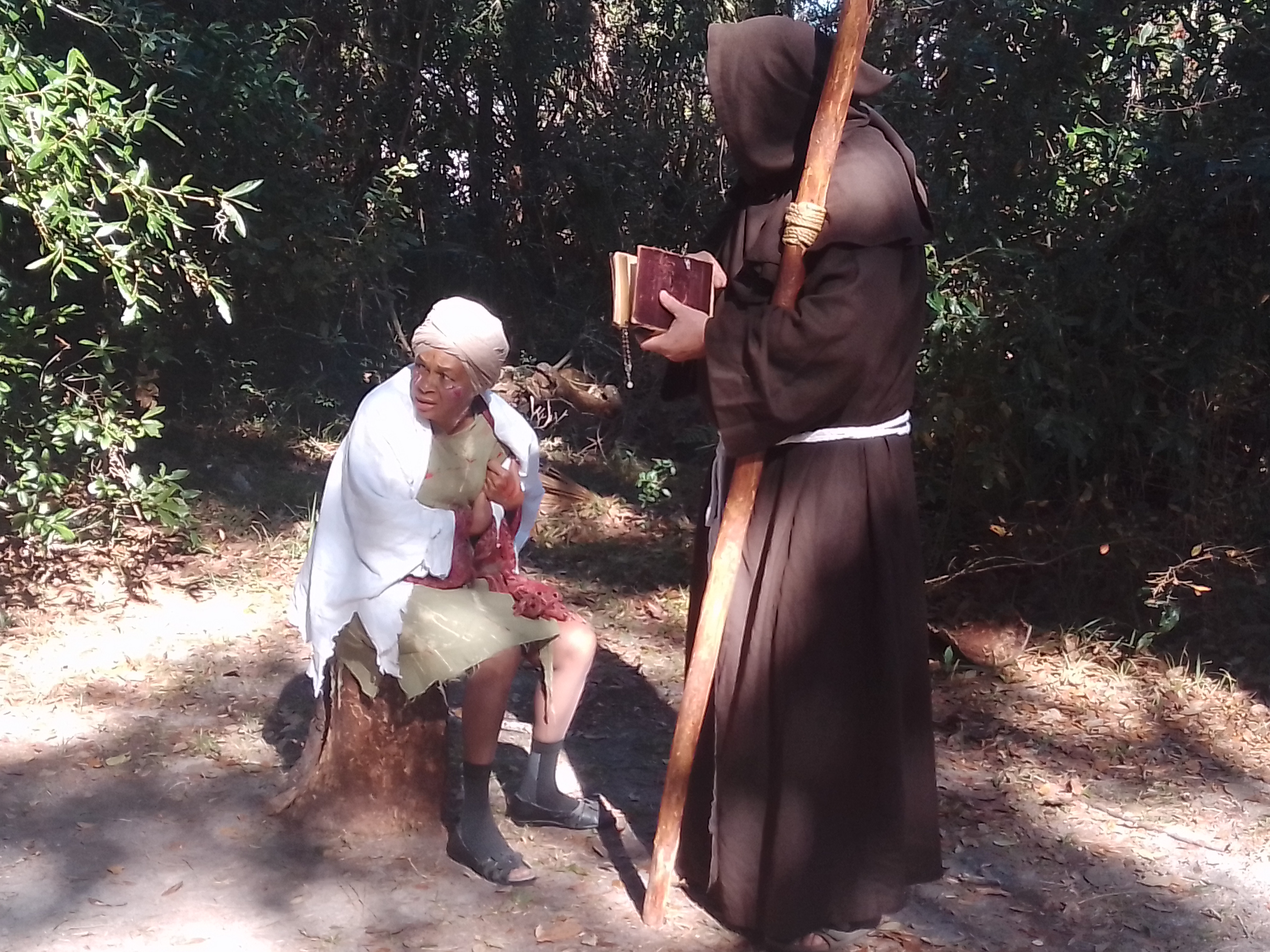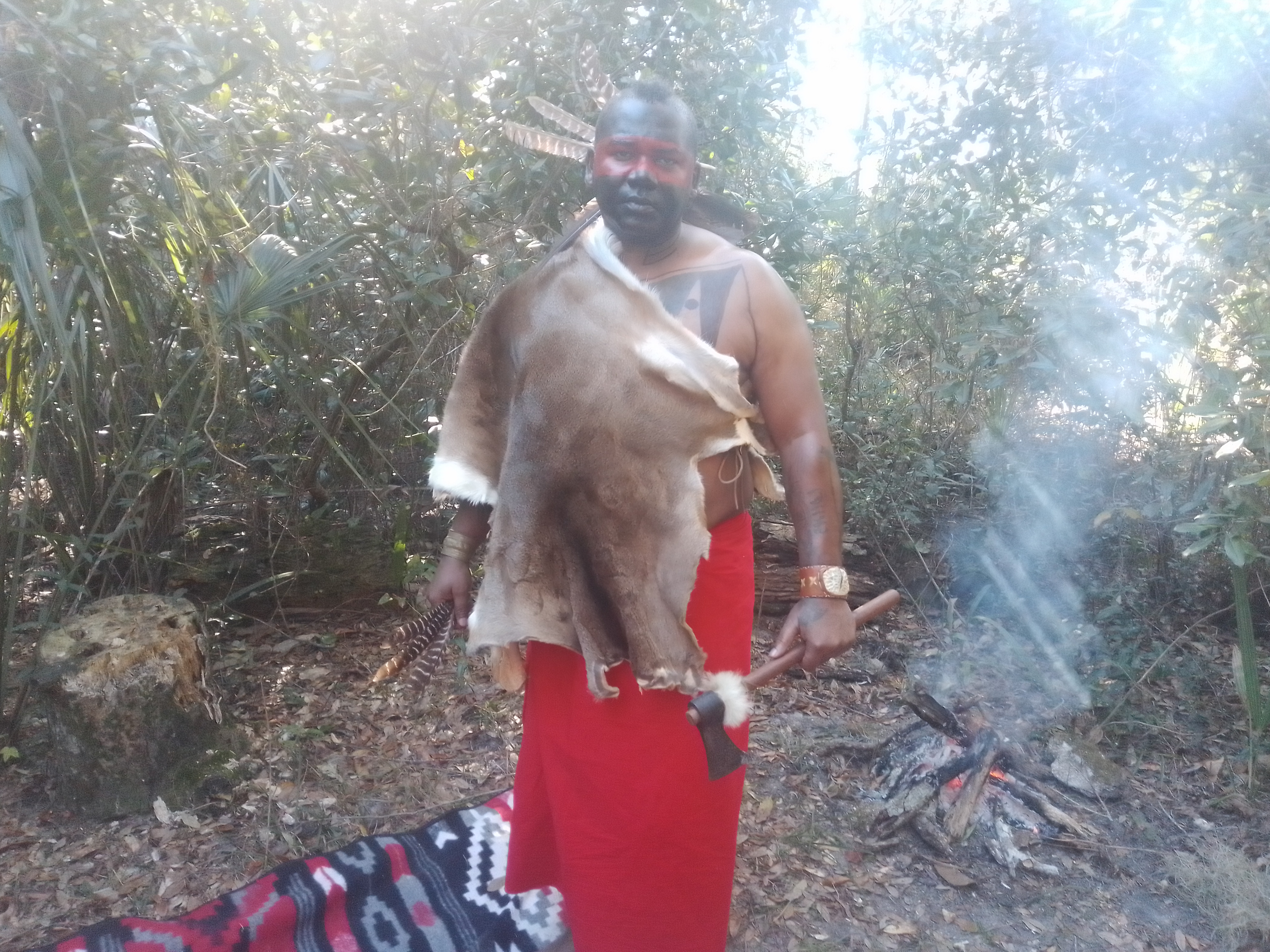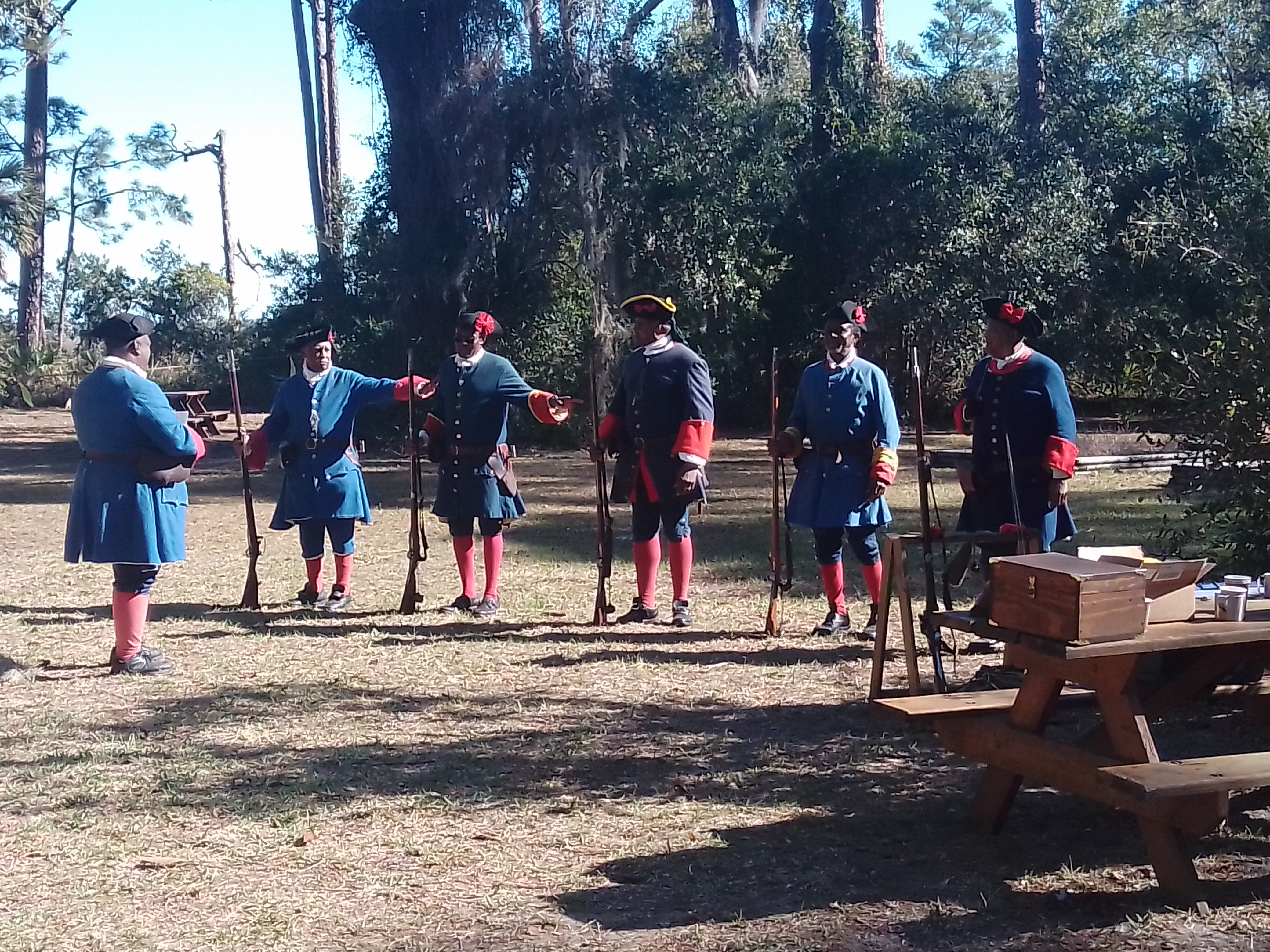Saturday, February 8, 2020, 03:13 PM - Trips, Historical Sites
Today I visited Ft. Mose, originally known as Gracia Real de Santa Teresa de Mose and attended a living history display. It was very informative, brings new light on to the history of Native and African Americans. Both cultures worked together in building a rich culture in the new America's.
Historical Background;
More than 250 years ago, African born slaves risked their lives to escape English plantations in Carolina and find freedom among the Spanish living at St. Augustine.
As early as 1687, the Spanish government had begun to offer asylum to slaves from British colonies. In 1693 the Spanish Crown officially proclaimed that runaways would find freedom in Florida, in return for converting to Catholicism and a term for men of four years military service to the Crown.
More than 250 years ago, African born slaves risked their lives to escape English plantations in Carolina and find freedom among the Spanish living at St. Augustine.
By 1742, Spain had effectively created a maroon settlement in Florida as a front-line defense against English attacks from the north. Spain also intended to destabilize the plantation economy of the British colonies by creating a free black community to attract slaves seeking escape and refuge from British slavery.

Ft. Mose stands as a monument to the courageous African Americans who risked and often lost, their lives in the long struggle to achieve freedom. It is the only site of its kind in the United States and is a precious and valuable part of our state and national heritage.
The villagers came from many different tribal and cultural groups in West Africa and were taken as slaves to English Carolina. While struggling to gain their freedom they had extensive contact, both friendly and hostile, with many Native American peoples,

Battling slave catchers and dangerous swamps, they helped establish the first American underground railroad more than a century before the Civil War. Courageous Africans and their Indian allies shuttled runaways southward, rather than to the north, as the later railroad would. In Florida, the Spanish freed the fugitives in return for their service to the King and their conversion to the Catholic faith. The Spanish were glad to have skilled laborers, and the freedmen were also welcome additions to St. Augustine’s weak military forces.
Military Training
In 1738 the Spanish governor established the runaways in their own fortified town, Gracia Real de Santa Teresa de Mose, about two miles north of St. Augustine, Florida.

Ft. Mose (pronounced “Moh- say”) became the first legally sanctioned free black town in the present-day United States, and it is a critically important site for Black American history. Mose provides important evidence that Black American colonial history was much more than slavery and oppression. The men and women of Ft. Mose won their liberty through great daring and effort and made important contributions to Florida’s multi-ethnic heritage.

Ft. Mose was named as a National Historic Landmark in 1995 and is an important element in Florida’s Black Heritage Trail. I encourage all to visit this great historical site.
Cannon Drill's
[Some Information from Ft. Mose historical society]
Photos. Are ours Feb.8 2020
 Avatar
Avatar